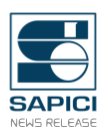- Sapici
- News
- 02 October 2020
- Comments Off on EUROPEAN DIISOCYANATES RESTRICTION SAPICI Positioning and Recommendations

EUROPEAN DIISOCYANATES RESTRICTION
SAPICI Positioning and Recommendations
The REACH restriction on diisocyanates was adopted during the REACH Committee on 4 February 2020 and was published on 4 August 2020. The Restriction introduces new minimum training requirements for workers handling diisocyanates and mixtures containing diisocyanates. This will apply to all professional and industrial users of products with a total monomeric diisocyanate concentration of > 0.1%.
The transition period during which industry must prepare for the training requirements is 3 years as of publication in the official European Journal and applies from 24 August 2020. This means all employees dealing with products in scope have to be trained until 24 August 2023.
Additionally, the transition period for the labelling requirement on packages will be 1.5 years after entry into force, meaning that labels on packages have to be in place until 24 February 2022. The labels shall display the information: “As from 24 August 2023 adequate training is required before industrial or professional use”.
SAPICI is committed to provide its clients further information, as soon as available, about product’s safe use and training that should be provided to all users of diisocyanate products containing more than 0.1% of isocyanates, as required by the restriction.
SAPICI welcomes the continued and strengthened attention that the European and global legislative bodies promote and direct towards the human health and the environment preservation and protection, valuing both the investments and the results achieved by the most attentive, sensitive and capable Companies in terms of EH&S–driven innovation. Such results are expressed and measured by both the resources dedicated to the use of always “green/greener” raw materials, technologies and manufacturing standards, followed by the commercialization of competitive and technology-intensive products and solutions that respect the most stringent international laws, regulations and standards.
At the same time, SAPICI believes that for any standard PU application where formulations below 0.1% cannot be developed yet, the market should be allowed to use the available products, always in full respect of the existing laws, regulations and best practices.
SAPICI’s clients know that since 2004 the Company has been developing, manufacturing and commercializing truly advanced polyurethane products and solutions fully compliant even with the proposed further restrictions currently being suggested by the German Dossier submitted to ECHA. Already thirteen years ago, first in the world SAPICI was introducing aromatic isocyanates with ultra-low free monomer content (less than 0.1%) representing a milestone in the Coating and Adhesives industries and still a benchmark in the market. That means that after the adopted restriction there would be no changes for SAPICI’s clients already using ultra-low free monomer products: neither in terms of product supply, nor in terms of linear pricing , by using these products no internal training by the end user
References for further information
The text of the hereby-referred Restriction is available here:
https://eur-lex.europa.eu/legal-content/EN/TXT/?qid=1596534449847&uri=CELEX:32020R1149
The communication of ISOPA/ALIPA (industry associations that represent producers of diisocyanates) related to the publication of the restriction:
https://www.isopa.org/media/3583/isopa-alipa-ebook-diisocyanates-reach-restriction.pdf
SAPICI Positioning Statement and Recommendations on the European Diisocyanates Restriction Proposal
https://www.sapici.it/position-on-the-diisocyanates-restriction-proposal-final-draft-1-pdf-2/
DATE AND PLACE OF ISSUING OF THIS DOCUMENT
September, 2020
SAPICI Headquarter
Caronno Pertusella (Varese, Italy)
